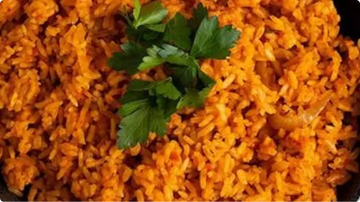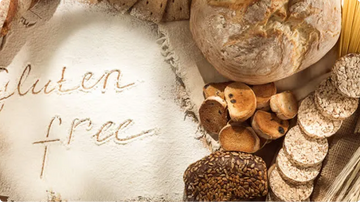Gluten-free flour is essential in cooking, baking, and even pasta-making ingredient. But gluten-free flour is much more complex than it initially seems.
There are various kinds of gluten-free flour available, each with unique qualities. Some work better in specific recipes, while others work better in different uses.
Why is gluten-free flour better for some uses than others, and why do people sometimes prefer it? This article will discuss gluten-free flour, how to use it, and why.
What is Gluten-Free Flour?
Gluten-free flour doesn’t include gluten, a sticky protein in many wheat products. Gluten-free flour is helpful for people who are allergic to gluten or trying to minimize its presence in their diets. You can use gluten-free flours instead of wheat flour or other grain flour. They have numerous use outside of the kitchen in addition to replacing conventional flour in baking.
It is important to remember that gluten-free grains used to make gluten-free flour should be grown, processed, transported, stored, and packaged in gluten-free environments.
Here, we’ll discuss two gluten-free flours: all-purpose and specialty.
- Gluten-free-all-purpose flour: Baked goods like bread, pastries, cakes, and biscuits can use gluten-free all-purpose flour. This gluten-free flour mix doesn’t taste like anything, so it doesn’t have a unique flavor or feel like flour made from wheat. Tapioca flour, potato starch, corn flour, and rice flour are the significant components of this type of flour.
- Specialty gluten-free flours: This flour will enable you to perfect a specific baking outcome. Some flours, for instance, can be used to thicken a sauce or in bakes goods to make a pie crust or softer and more crumbly cookies. The primary ingredient in these flours will differ depending on the desired outcome.
Benefits of Gluten-Free Flour:
Here’re some good reasons to use gluten-free flour.
Prevent Allergies
Although only some people are gluten intolerant, many people experience this protein-related problem. And it’s challenging to determine if you belong to that group. Therefore, why not be safe and avoid gluten as much as possible?
Good for Digestive Health
The most popular types of grains used to make gluten-free flour are jowar, bajra, and ragi. These give your diet some diversity and are relatively light and easy to digest.
No Bloating, Cramps, or Diarrhea
Gluten grains, such as wheat, rye, and barley, contain oligosaccharides easily fermented by the bacteria in the intestines. You won’t get oligosaccharides, fermentation, gas, cramps, or diarrhea if you use gluten-free flour.
Alleviate Chronic Gastrointestinal Disorders
It makes sense to choose gluten-free flour if you suffer from irritable bowel syndrome. Although it won’t cure the illness, it will undoubtedly aid in lowering IBS occurrence.
Prevent Celiac Disease
Celiac disease is an autoimmune disorder. Patients with celiac disease cannot digest gluten, and gluten accumulation ultimately begins to damage the small intestine. Despite medical advances, most people suffering from celiac disease cases remain undiagnosed. Getting checked for every possible disease is impossible, but eating better limits your risk factors.
Free Of Preservatives and Additives
Getting unprocessed, chemical-free food in this fast-paced world can take time and effort. Gluten-free flours usually includes all-organic ingredients, unlike mass-produced gluten-based foods.
By using gluten-free recipes, you may assist your body in fueling itself with natural nutrients rich in vitamins and minerals rather than external additions and preservatives. Examples include organic fonio flour, enriched with essential amino acids, and organic cassava flour, rich in antioxidants and nutrients.
Types of Gluten-Free Flour
There are many different types of gluten-free flour. Many use different types of grains than wheat, while others use nuts or seeds. Here are some of the most popular alternatives to wheat flour:
- White rice flour
- Brown rice flour
- Sweet rice flour
- Almond flour
- Sorghum flour
- Tapioca flour
- Oat flour
- Corn flour
- Coconut flour
- Potato starch
- Amaranth flour
- Teff flour
- Tapioca starch
- Chickpea flour
- Whole grain millet flour
- Cassava flour
- Stabilized rice bran
- Whole sorghum flour
- Arrowroot flour
- Chia flour
- Whole grain quinoa flour
This list of gluten-free flours needs to be more comprehensive, and some may not be listed here. You can also mix and match different types to create the bread you like best!
Other Gluten-Free Frequently Asked Questions
Here are some other FAQs about gluten-free flour and how they can benefit you.
Why Go Gluten-Free?
People with celiac disease, an autoimmune problem, prefer a gluten-free diet, which means they do not eat any foods which include this protein. In this disease, the person’s body sees gluten as a danger and over-activates the immune system and attacks the body’s cells. This reaction damages healthy body cells and impacts how their bodies absorb other nutrients.
People who are allergic to wheat may also be allergic to gluten. In addition, many people may also have non-celiac sensitivity to gluten, typically brought on by the fact that eating gluten might irritate their gastrointestinal tracts and cause unpleasant symptoms. Bloating, gas, diarrhea, and cramping are some symptoms. These are the widespread symptoms that affect most people, which is why adopting a gluten-free diet has become so common.
Why Use a Commercial Gluten-Free Flour Blend?
The use of a commercially available flour blend that is gluten-free is the quickest and most straightforward solution. That’s how easy baking should always be: grab a bag of gluten-free flour from Quaynaturals or the racks from your local grocery store and get to work!
A quick Google search or Amazon are generally your best options if you live elsewhere.
Is Gluten-Free Flour Processed?
Gluten-free flour is processed similarly to wheat flour. The gluten-free nuts and grains eliminate any traces of gluten.
Does Gluten-Free Flour Taste Different from Wheat Flour?
Gluten-free flour can have a different taste from wheat flour depending on what it uses, but not very much. You can mix other gluten-free flours to get the results that cooks want.
There will be minor flavor or texture alterations when using gluten-free flour in baking.
Millet flour has a light flavor, while buckwheat flour has a more earthy flavor. Also, quinoa flour tastes like nuts, and sometimes bean flour can taste like beans. Because of these differences, you may need to experiment with gluten-free flour blends, whether you buy them already or make them in the kitchen.
What is the Shelf Life of Gluten-Free Flour?
The typical shelf life of gluten-free flour, whether purchased from a shop or prepared at home, is one to two months in the pantry, four to six months in the fridge, and up to a year in the freezer. Nut flours like almond and coconut should always be frozen or refrigerated for storage.
Share this blog post with your friends and family if you found it helpful. Keep visiting for more helpful stuff. Thanks!



